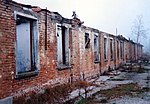
Primo Michele Levi was an Italian chemist, partisan, writer, and Jewish Holocaust survivor. He was the author of several books, collections of short stories, essays, poems and one novel. His best-known works include If This Is a Man, his account of the year he spent as a prisoner in the Auschwitz concentration camp in Nazi-occupied Poland; and The Periodic Table (1975), a collection of mostly autobiographical short stories each named after a chemical element as it played a role in each story, which the Royal Institution named the best science book ever written.

Camp Westerbork, also known as Westerbork transit camp, was a Nazi transit camp in the province of Drenthe in the Northeastern Netherlands, during World War II. It was located in the municipality of Westerbork, current-day Midden-Drenthe. Camp Westerbork was used as a staging location for sending Jews to concentration camps elsewhere.

Drancy internment camp was an assembly and detention camp for confining Jews who were later deported to the extermination camps during the German occupation of France during World War II. Originally conceived and built as a modernist urban community under the name La Cité de la Muette, it was located in Drancy, a northeastern suburb of Paris, France.

On 19 April 1943, members of the Belgian Resistance stopped a Holocaust train and freed a number of Jews who were being transported to Auschwitz concentration camp from Mechelen transit camp in Belgium, on the twentieth convoy from the camp. In the aftermath of the attack, a number of others were able to jump from the train too. In all, 233 people managed to escape, of whom 118 ultimately survived. The remainder were either killed during the escape or were recaptured soon afterwards. The attack was unusual as an attempt by the resistance to free Jewish deportees and marks the only mass breakout by deportees on a Holocaust train.
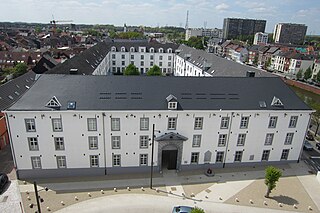
The Mechelen transit camp, officially SS-Sammellager Mecheln in German, also known as the Dossin barracks, was a detention and deportation camp established in a former army barracks at Mechelen in German-occupied Belgium. It served as a point to gather Belgian Jews and Romani ahead of their deportation to concentration and extermination camps in Eastern Europe during the Holocaust.

Bolzano was a transit camp operated by Nazi Germany in Bolzano from 1944 to 3 May 1945 during World War II. It was one of the largest Nazi Lager on Italian soil, along with those of Fossoli, Borgo San Dalmazzo and Trieste.

Fort de Romainville, was built in France in the 1830s and was used as a Nazi concentration camp in World War II.

Grete Berger was an Austrian-German stage and film actress whose career came to an end following the rise of the Nazi Party in 1933. Berger was murdered at Auschwitz concentration camp in 1944 shortly after her arrival.
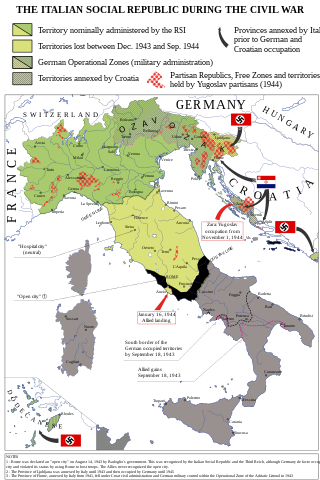
The Holocaust in Italy was the persecution, deportation, and murder of Jews between 1943 and 1945 in the Italian Social Republic, the part of the Kingdom of Italy occupied by Nazi Germany after the Italian surrender on 8 September 1943, during World War II.
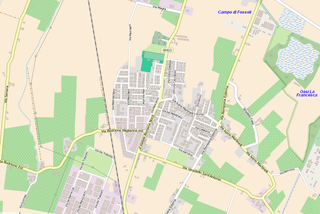
Fossoli is an Italian village and hamlet (frazione) of Carpi, a city and municipality of the province of Modena, Emilia-Romagna. It is infamous for the homonym concentration camp and has a population of about 4400.
Nomadelfia is an intentional community in Grosseto, Italy. It is composed of practising Catholics following a lifestyle inspired by the Acts of the Apostles, i.e. an attempted return to the early church. According to the Catholic Church, Nomadelfia is a parish of married families and lay people, and to the Italian state it is a private association of citizens.

Two of the three Axis powers of World War II—Nazi Germany and their Fascist Italian allies—committed war crimes in the Kingdom of Italy.
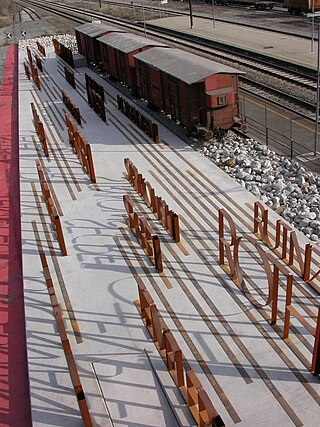
Borgo San Dalmazzo was an internment camp operated by Nazi Germany in Borgo San Dalmazzo, Piedmont, Italy.
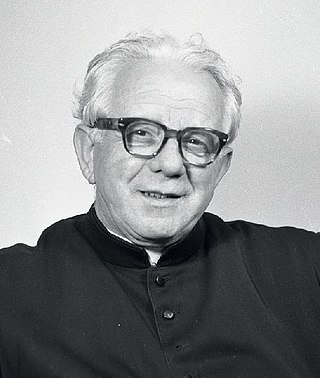
Zeno Saltini was an Italian Roman Catholic priest and the founder of the Nomadelfia movement. He also had set up a war orphans refuge at the old Fossoli di Carpi concentration camp in the Emilia-Romagna region but this was closed in 1952 after ecclesial authorities ordered his departure and the camp's closure. The movement moved to Grosseto after a countess donated land to them to use and Saltini's communal group flourished and grew in numbers despite the Church's severe reservations regarding Saltini's work. This friction led in 1953 to him leaving the priesthood though he was later restored in 1962. Future outlooks on Nomadelfia mellowed over time and even earned papal support from Pope John Paul II towards the end of Saltini's life.

Karl Friedrich Titho was a Germany military officer, who as commander of the Fossoli di Carpi and Bolzano Transit Camps oversaw the Cibeno Massacre in 1944. Titho was jailed in the Netherlands after World War II for other war crimes committed there, released in 1953, and then deported to Germany. Despite an arrest warrant in Italy in 1954, Titho was never extradited to stand trial for his actions in Italy, and died in Germany in 2001, confessing and repenting his role in the atrocities just days before his death.
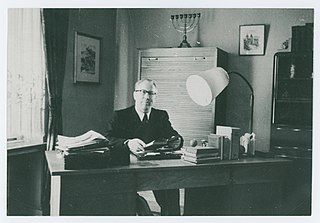
Friedrich Boßhammer (1906–1972) was a German jurist, SS-Sturmbannführer and close associate of Adolf Eichmann, responsible for the deportation of the Italian Jews to extermination camps from January 1944 until the end of the war in Europe. He was arrested in West Germany in 1968 and stood trial. Boßhammer was convicted and sentenced to life imprisonment in April 1972 for his involvement in the deportation of 3,300 Jews from Italy, but died before he could serve time in prison.
The RSI Police Order No. 5 was an order issued on 30 November 1943 in the Italian Social Republic to the Italian police in German-occupied northern Italy to arrest all Jews except those born of mixed marriages, which were required to be monitored by the police.

The Memoriale della Shoah is a Holocaust memorial at the Milano Centrale railway station commemorating the Jewish prisoners deported from there during the Holocaust in Italy. Jewish prisoners from the San Vittore Prison, Milan, were taken from there to a secret underground platform, Platform 21, to be loaded on freight cars and taken on Holocaust trains to extermination camps, either directly or via other transit camps. Twenty trains and up to 1,200 Jewish prisoners left Milan in this fashion to be murdered, predominantly at Auschwitz.

Piero Terracina was an Italian Jewish manager, Holocaust survivor.
The Cibeno massacre was a massacre carried out by the SS on 12 July 1944 at the shooting range of Cibeno, a fraction- now a district - of Carpi, in which 67 people already imprisoned in the Fossoli camp died. Among the victims were a number of notable Italian partisans, including Carlo Bianchi, Jerzy Sas Kulczycki, Felice Lacerra, Michele Levrino and Giuseppe Robolotti.



